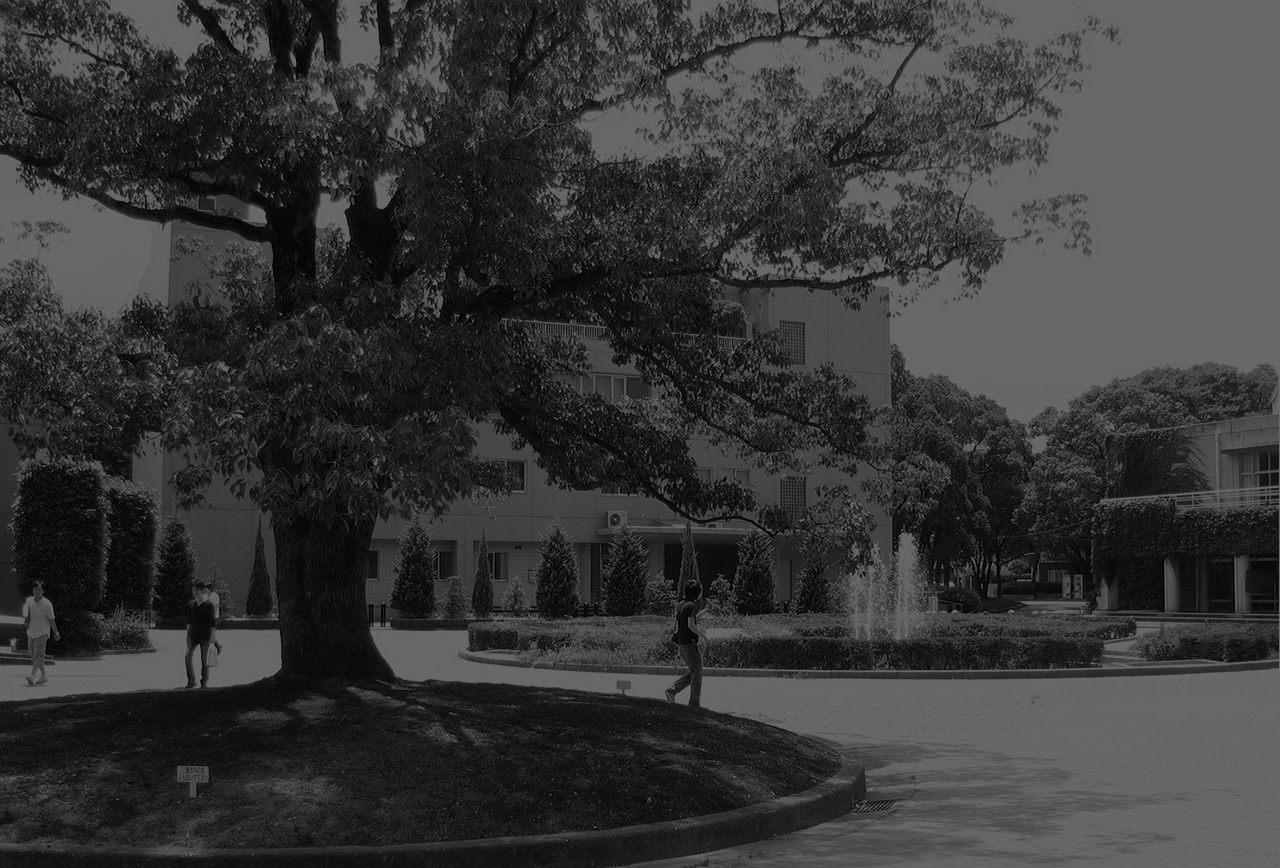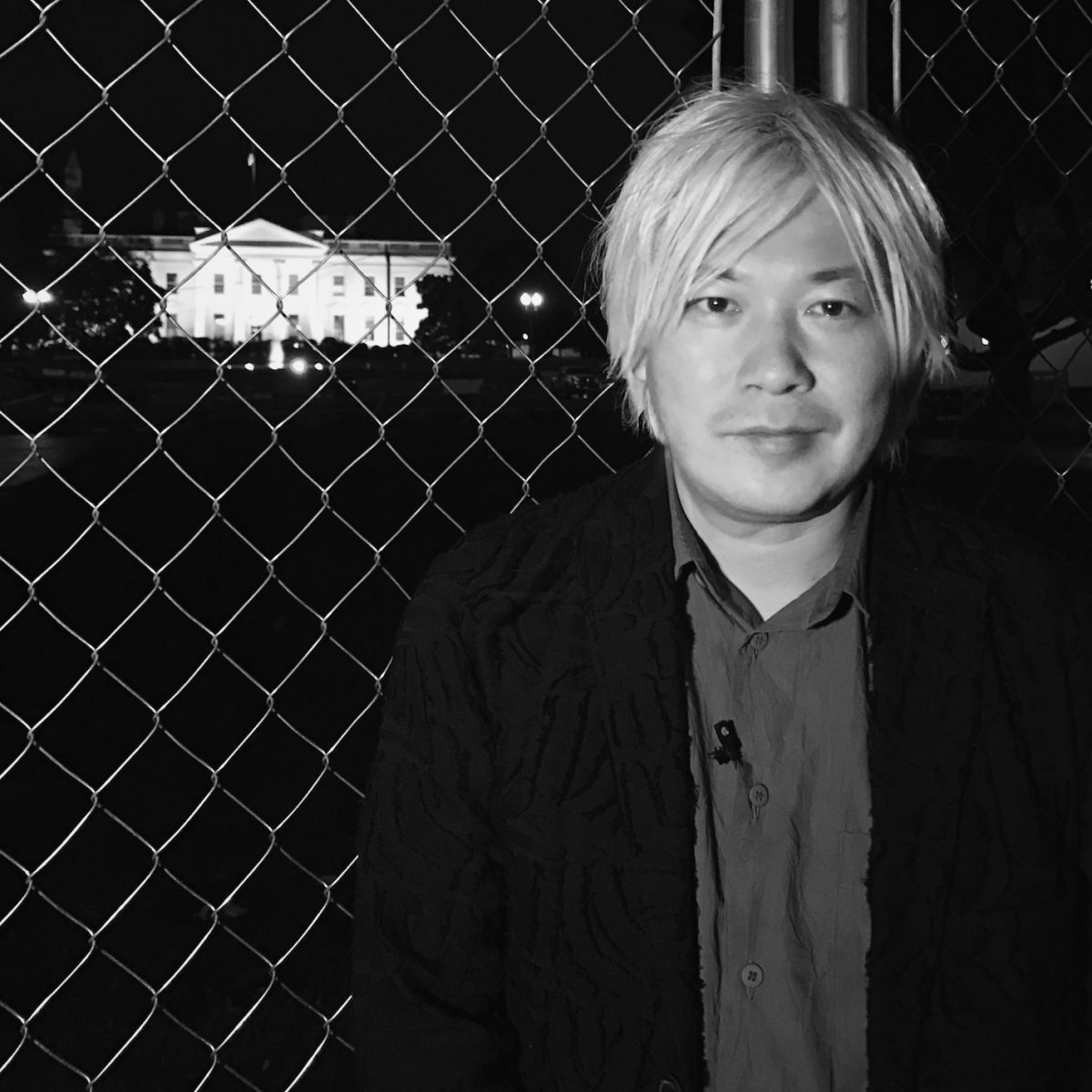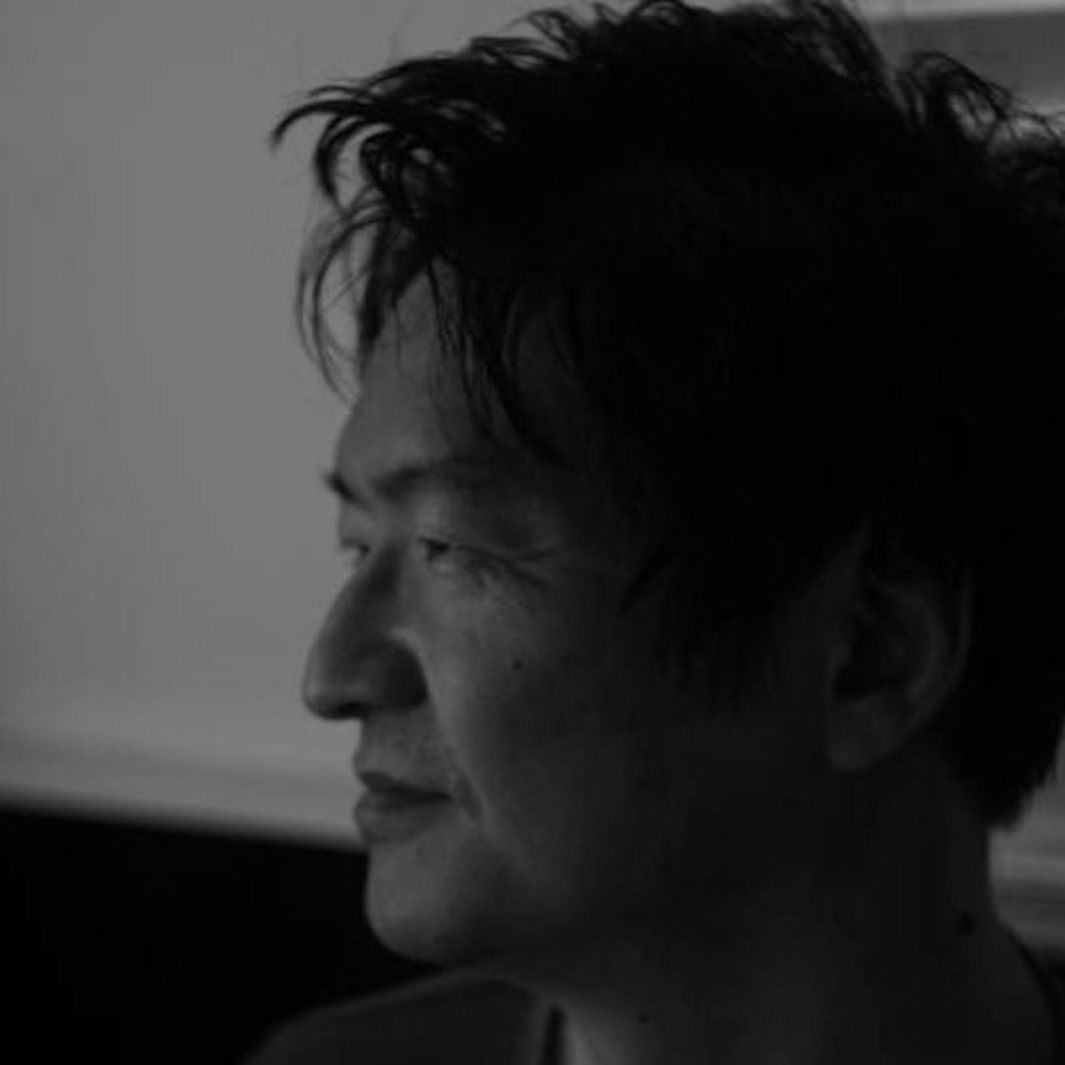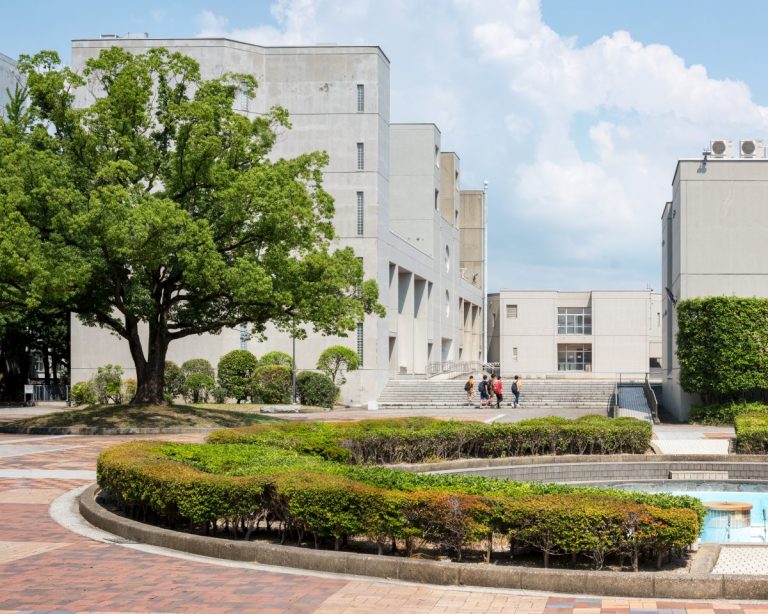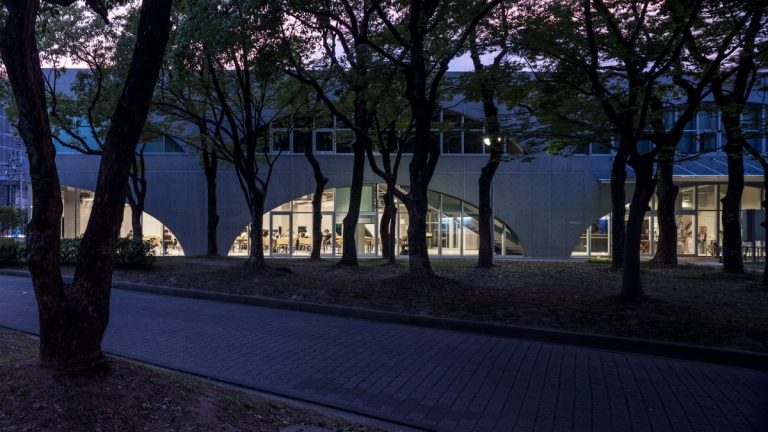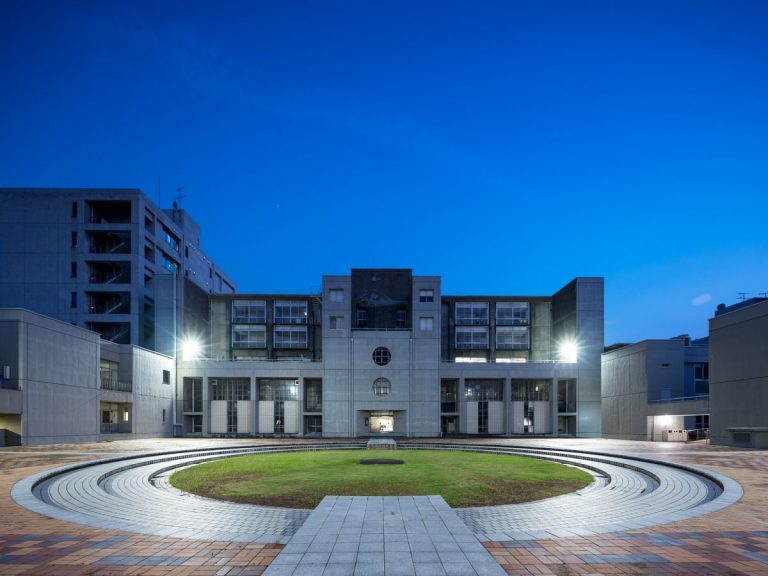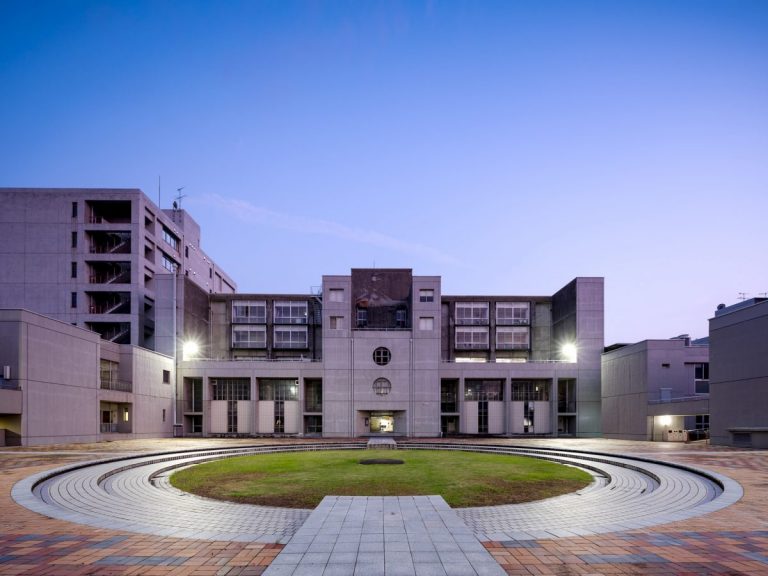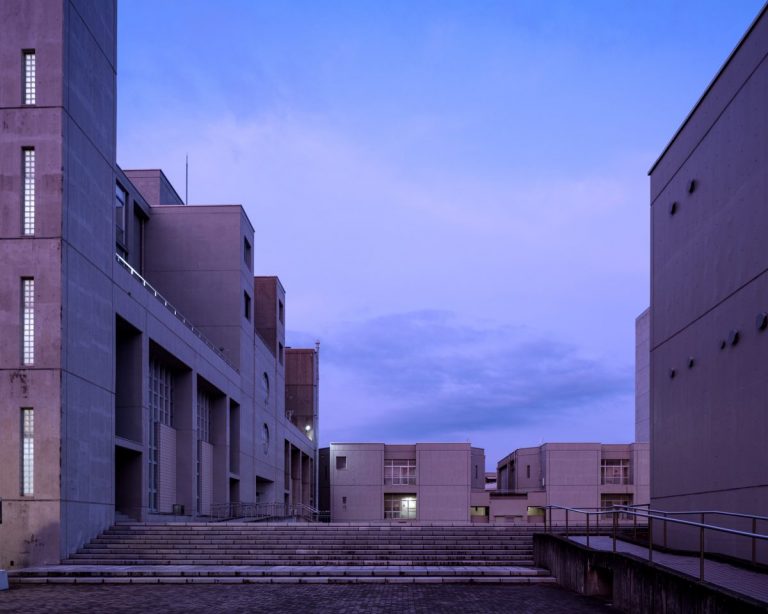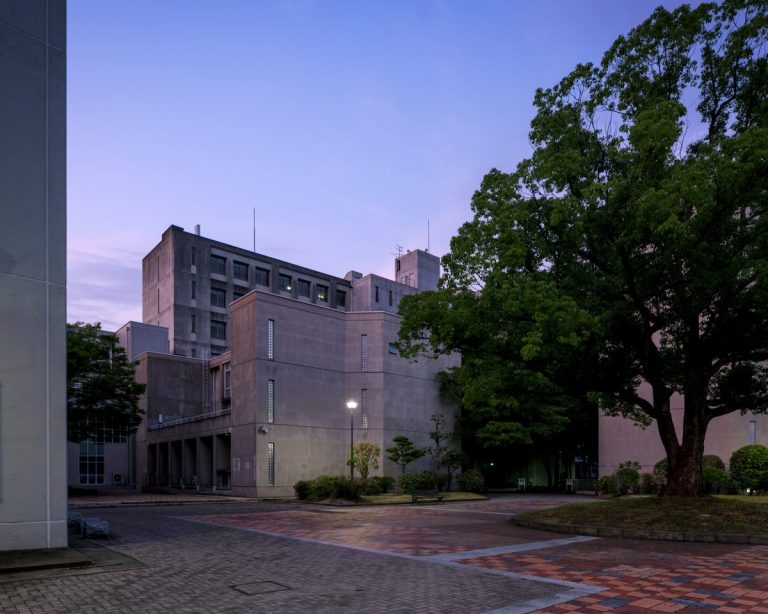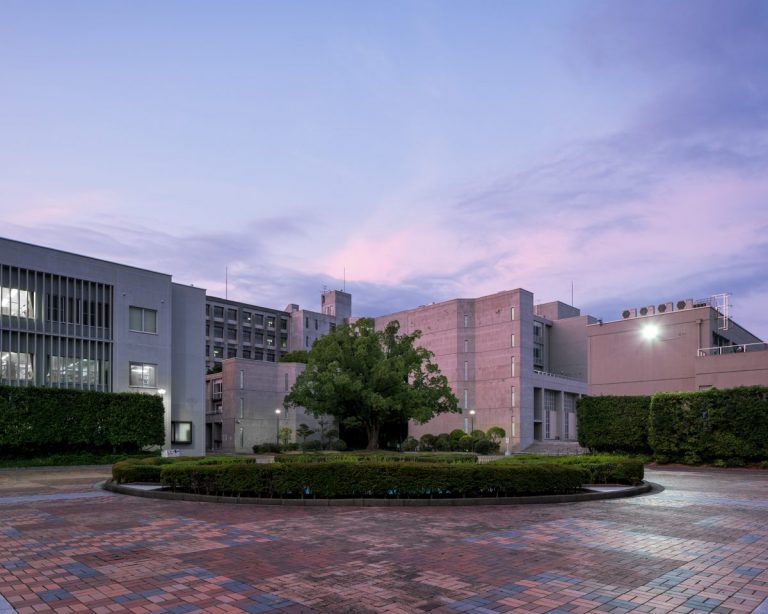The 15th Study of Design Fundamentals Seminar “How to organize art festivals and risk management?"
Tuesday, September 29th, 2020: opens at 15:30 and starts at 16:00
Kyushu University Faculty of Design explores the fundamental methodology of design for integrating a wide range of designs. For the 15th seminar, titled “How to organize art festivals and risk management?”, an online lecture was broadcasted regarding organizing 2019 Aichi Trienale arts festival, especially about the closure and resumption of one of its exhibits titled “After ‘Freedom of Expression?’” by Mr. Tsuda Daisuke, Journalist/media activist.
KOGA Toru, Faculty of Design Professor, overviews the online seminar as follows.
Hearing the story of Mr. Tsuda, the artistic director of Aichi Triennale 2019, bring to mind the phrase that there is no way out of a difficult situation other than to open to things to scrutiny.
While there is a growing tendency for local governments to use arts for attracting people and to reap the economic effects from it, there is also a tradition of preserving the autonomy of art, keeping a certain distance from the society and politics and purely pursuing the possibilities of expression. It seems that Mr. Tsuda dared to pursue the autonomy of art by socializing and politicizing artistic activity itself.
If art is to be used only as a means of regional development, there should be no political color in it. According to the Local Civil Service Law, civil servants must be politically neutral. Therefore, art festivals that spend public money must also not have a particular political color in this sense.
However, Mr. Tsuda raised the issue of gender disparity among the artists exhibiting at the exhibition and questioned another political issue, namely the exclusion of female artists lurking even in the traditional contemporary art exhibitions, which were not necessarily political in nature. Concerning the much-talked-about “After ‘Freedom of Expression? ‘”, he tried to raise the issue of politics within the supposedly neutral organizations, by making apparent the works that have been excluded from exhibitions in the name of the so-called “political neutrality” by the public museums. By doing so, he transformed one local event in the region into one that questions global universality, resulting in unprecedented box office performance that even canceled the effects of the government’s injunction on subsidies.
People assert the autonomy of art and curation. Art should be managed only by the expertise of artists and curators, and politicians and other non-technical amateurs should not dictate or intervene there. That goes against the freedom of expression. As an outside visitor, Mr. Tsuda found the current state of art and curation to be biased under such assertion, and he tried to open its closedness to public debate, questioning the politics hidden in it.
Therefore, he did not like entrenching in the idea of autonomy of the arts, even against the voices of politicians and the public that the contents of the exhibition were “biased”. To push back against the politicians’ intervention from the above, by reopening the once-closed exhibition, he relativized it as an expression of opinion of one particular citizen, and instead, exposed the political nature of such political intervention to a public debate. By having a yelling conversation with the people who organized protest phone calls at the hotel café, he built a relationship that was unlike anything normal. On the contrary, being exposed to such crises helped him deepen his relationship, both with the artists who attacked him as an enemy of freedom of expression and the volunteers who supported the exhibition.
Freedom of expression lives in the dynamism of directly facing, or, in the incessant efforts to refine the techniques of facing the external voices, rather than merely blocking them. If one dares to call that effort a “design”, that design can be called “crisis management.” According to Mr. Tsuda the theme of Aichi Triennale 2019, “Taming Y/Our Passion,” has three aspects: emotions, information, and compassion of people. Despite being messed up by these three aspects, the exhibition has taken on the appearance of public art, supported by his spirit of bringing various things to the spotlight. Article 89 of the Constitution prohibits public spending on things beyond the control of “public authority.” Nevertheless, in that sense indeed, this exhibition can be said to be under the control of “public authority”.
Postscript: Since there were additional opinion addressed to Mr. Tsuda in the questionnaire afterward, the opinion and his reply is posted below.
[Opinion]
I know this may be fruitless, but this is a message to Mr. Tsuda. I think the message of the exhibition was to equalizethe gender of the artists. But I think there is a bias in the age group of the selected female artists. It somewhat reminded me that, after all, women are worthless when they are no longer young… If you keep an eye on it in the future, I think people can feel even more hope in art!
[Reply from Mr. Tsuda]
Actually, we had an internal debate on this point. However, as a practical problem, female artists face the M-shaped curve issue peculiar to Japan (a woman who gave birth cannot return to her original career because of insufficient support of her husband’s housework, which makes it difficult to return to the company due to child-rearing. So, the employment rate for females in their 30~40s is significantly lower than that for men). Specifically, there are many female artists who stop their activities in this age group. There are quite a few female artists in their 50s and older who have overcome that period and established themselves as artists, but the unmarried rate among them is considerably high.
We also had some older female artists, but there were some cancellations due to various reasons, such as having another exhibition or physical issues. That is why this time, our age structure became what it was.
I was particular about the affirmative action of balancing gender equality but choosing an artist with a matching theme could not be sacrificed any more. As a result, the number of female artists around their 40s was low, because the age group did not have many options. There was an internal debate, and I was keeping an eye on it, but we had our limits. First, we should emphasize taking the first step, and I think that the balance of content and age group will be an issue for the future. I think that it is not something for people outside the art industry like myself to do. I want the art industry to change itself from the inside out.
[Speaker]
Tsuda Daisuke
Born in Tokyo in 1973. Graduated from School of Social Science of Waseda University. Journalist/media activist. Chief editor of database, Politus. Adjunct professor at Department of Economics, Faculty of Economics, Osaka University of Economics. Host of TV Asahi Chanel 2 program “Tsuda Daisuke, Nihon ni Purasu”. News supervisor of J-WAVE “JAM THE WORLD”.
Date
Tuesday, September 29th, 2020
Venue
Online
Contact
Professor Toru Koga, Design Fundamental Studies Seminar Office, Kyushu University, Faculty of Design
designfundamentalseminar@gmail.com
-
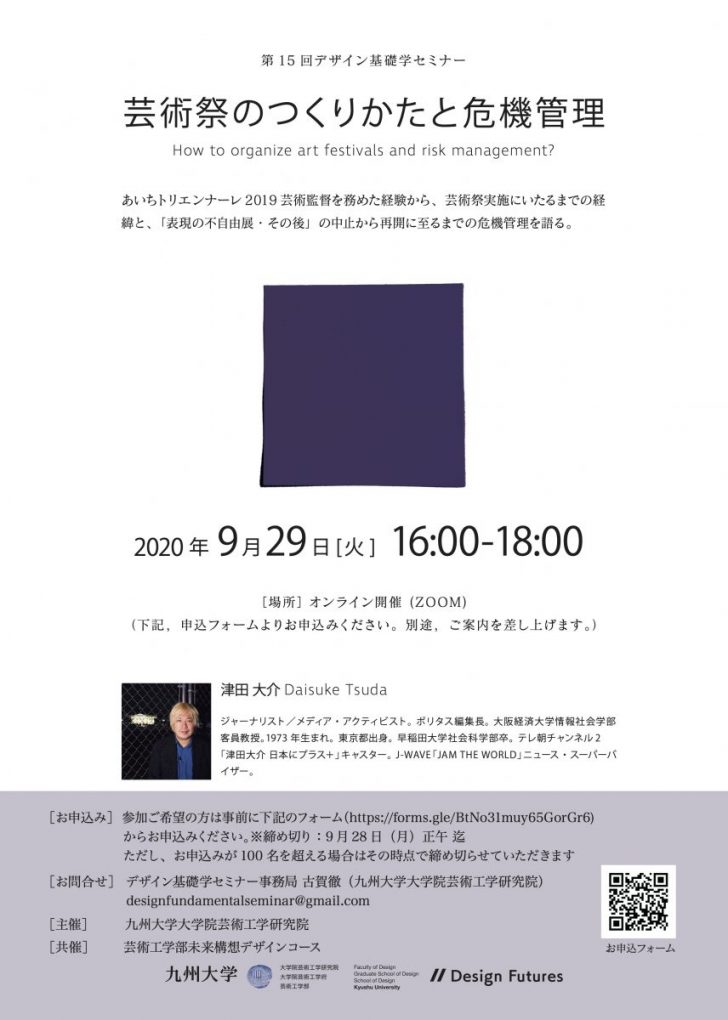 The flyer for the 15th Seminar
閉じる
The flyer for the 15th Seminar
閉じる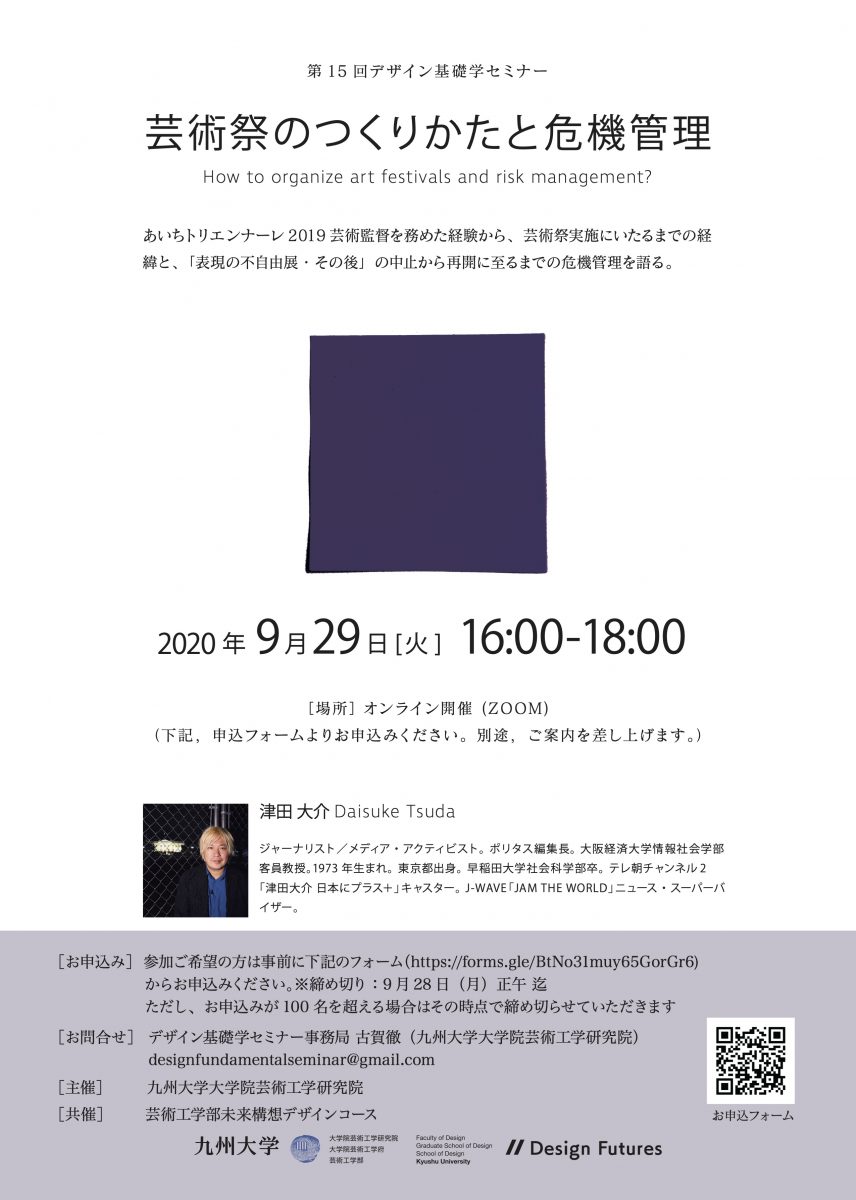
The flyer for the 15th Seminar
![九州大学イノベーションデザインネクスト[KID NEXT]](https://www.kidnext.design.kyushu-u.ac.jp/wp-content/themes/kidnext/img/logo_header.png)
